Modern healthcare faces many different challenges, but despite rapid advances in medicine, there are diseases that continue to affect millions of people. Varicose veins of the lower extremities ICD 10 - I83 are just a practical problem that cannot be resolved over time.
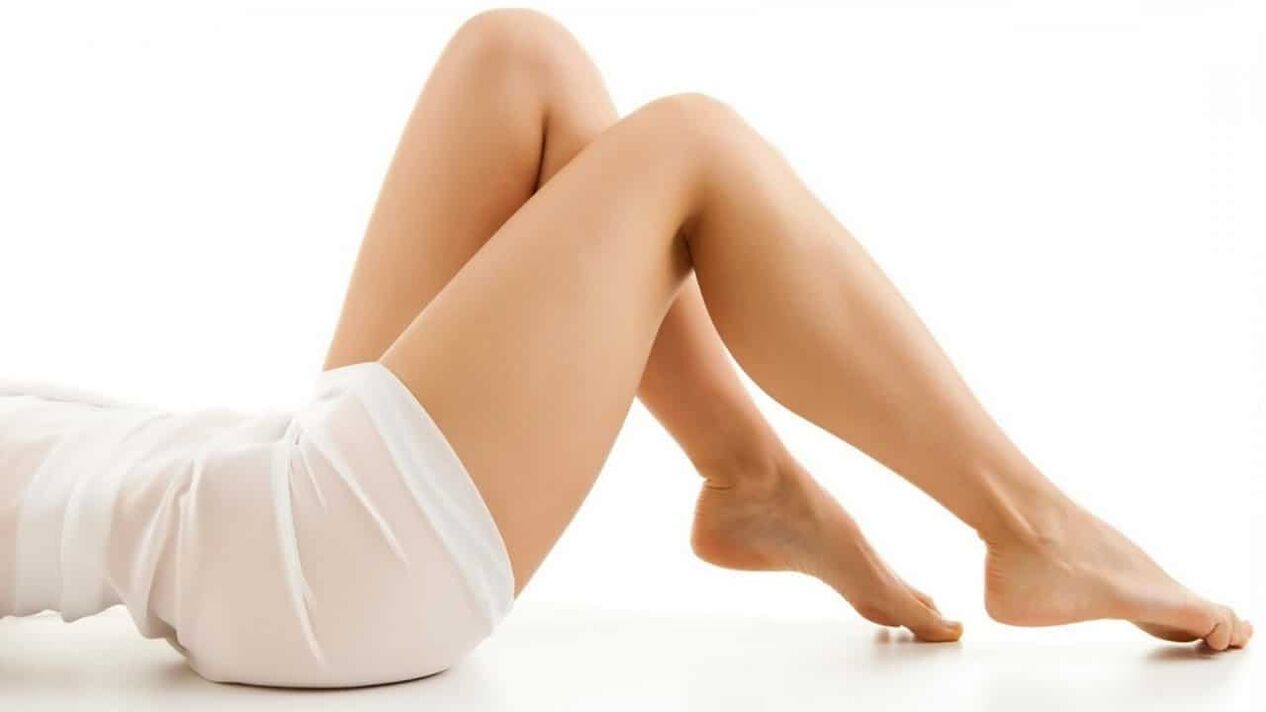
Quantitative popularity
This disease has become common in many developed countries such as America, France, Belgium, Germany, etc. v. The number of patients diagnosed with this disease is nearly 1/4 of each country's population.
Half of the patients are over 55 years old, but the rest are healthy workers, often working in manufacturing. As any VD disease progresses, complications develop, patients lose their jobs due to disability, so the problem becomes not only medical but also economic and social. The appearance of varicose veins may be correlated with the patient's age. In people over 70 years of age, varicose veins of the lower extremities are more common than in people before retirement age.
Four out of a hundred patients over 80 years old have varicose veins in a more severe form due to accompanying pathologies, in the form of various trophic ulcers, dermatitis or eczema. Also at this age, other diseases of the cardiovascular and bronchopulmonary systems occur, thereby excluding the possibility of surgical intervention.
Important!At the first symptoms of the disease, it is better to consult a doctor; the younger the patient's age, the lower the risk if surgical treatment is required.
Origin of the disease
Although the disease progresses gradually, there are etiological factors that lead to the development of varicose veins.
So what is the cause of varicose veins?
- genetic;
- endocrine reasons;
- mechanical factors;
- infection;
- poisoned;
- nonspecific inflammatory process;
- Factors contributing to venous hypertension.
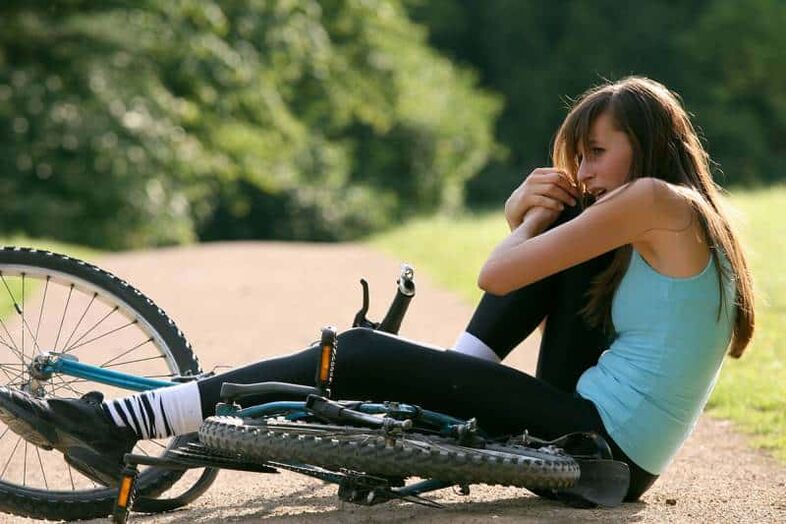
Complaints and symptoms
The strange thing is that from the very beginning of the disease, visible disorders appear that are often overlooked. By mistaking small vascular defects for a small external disorder that will "go away on its own", the patient will stimulate the disease to develop.
Other symptoms develop gradually:
- feeling of fatigue/heaviness in the legs;
- swelling in the foot area;
- night cramps;
- numbness, tingling, pins and needles sensation;
- pain in the area of varicose veins.
Diagnosing varicose veins is an important condition at any stage of the disease
Disease at any stage requires diagnosis; the diagnosis itself will suggest which treatment option is most acceptable to the patient. Clinical and instrumental diagnostic methods are used in parallel. Depending on the progression of the disease, all methods or only part of them can be used.
Clinical examination method - examination and conversation
Clinical methods are used not only for varicose veins, but also for any other diseases:
- Get history. The history includes all the basic information about his life (age, genetics, bad habits, main type of work).
- Definition of complaint. Complaints may indicate the degree to which varicose veins have progressed by the time of examination. The duration of the disease becomes an important condition. When do the first symptoms of foot disease appear?
- Investigate.During the examination, the doctor pays attention not only to the blood vessels, but also to the condition of the skin, to exclude the presence of complications and accompanying pathologies. It is also important to determine the degree of damage, the temperature at the site of varicose veins, as well as the tension and elasticity of the vessels.
A phlebologist is the first doctor who will examine your feet.
Instrument testing method is a prerequisite
To prescribe treatment, one examination will not be enough. Varicose veins of the lower extremities require mandatory instrumental diagnosis. In instrumental research methods, the foci of varicose veins are determined, the length of the damaged vessels, the deterioration of venous valves, the speed of blood flow, etc. v.
This:
- Supersonic.A standard B-mode study provides a complete picture of the anatomy and location of the vessel and its adjacent vessels. Ultrasound also shows pathologies of the vein walls.
- Doppler ultrasound.Research determines the speed of blood flow, thereby determining the pathology of the valves in the vessels.
- X-ray contrast venography. A more complicated type of diagnosis using X-rays. This procedure is rarely used due to possible complications.
- Computed tomography vein scan. It is performed in a similar way to X-ray contrast, with the introduction of contrast material into the vessel lumen. CT images, unlike X-rays, are three-dimensional.
- MRI.This method is reasonable and informative, performed without the use of contrast agents or other drugs. However, this method is still expensive so it is extremely rarely used.
Note!In patients with an iodine allergy, contrast agents cannot be used, in which case an MRI scan may be required.
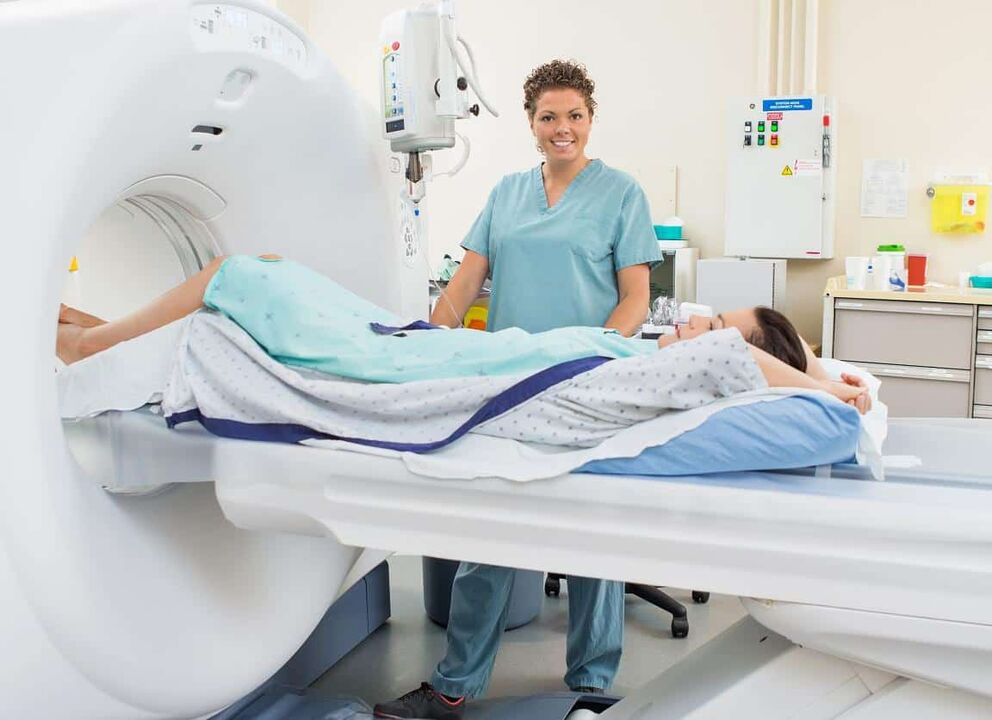
Diagnosis by classification
Like other diseases, varicose veins are divided into classes, taking into account many factors:
| External expression |
|
| Cause of the disease |
|
| Anatomical location of veins |
|
| Mechanism of the disease |
|
The most common reason for contacting a specialist is varicose veins of the lower limbs of the 2nd degree, when the external manifestations of the disease become significant. Perhaps, if the disease does not manifest itself externally, the detection of varicose veins will occur at a later stage.
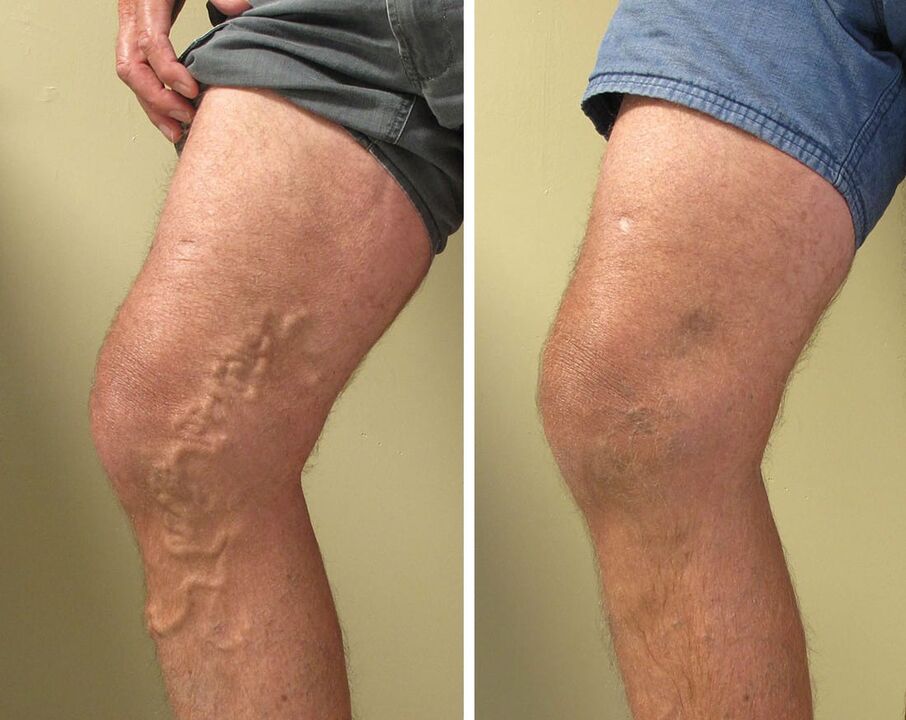
Note!The concept of "varicose veins in the lower extremities" is used only colloquially, that is, deep varicose veins, which can only be diagnosed by instrumental methods.
To cure or not to cure, that is the question
The gradual progression of the disease sooner or later will make the patient think that treatment is necessary. Usually, the doctor's task is to convince the patient to start treatment at the early stages of the disease. Treatment options may vary and depend on many factors (age, symptoms, disease severity, etc. ).
Therefore, treatment may be aimed at:
- improve quality of life; cosmetic surgical intervention.
- prevent complications; impact on microcirculation.
- eliminate symptoms; Hemodynamically significant treatment.
One way or another, the treatment method is always chosen by a specialist (vascular surgeon, vascular surgeon). In the treatment of varicose veins, complexity is very important, so you cannot limit yourself to only surgical intervention or only therapeutic and preventive exercise. It is important to follow all of your doctor's instructions.
Lifestyle advice
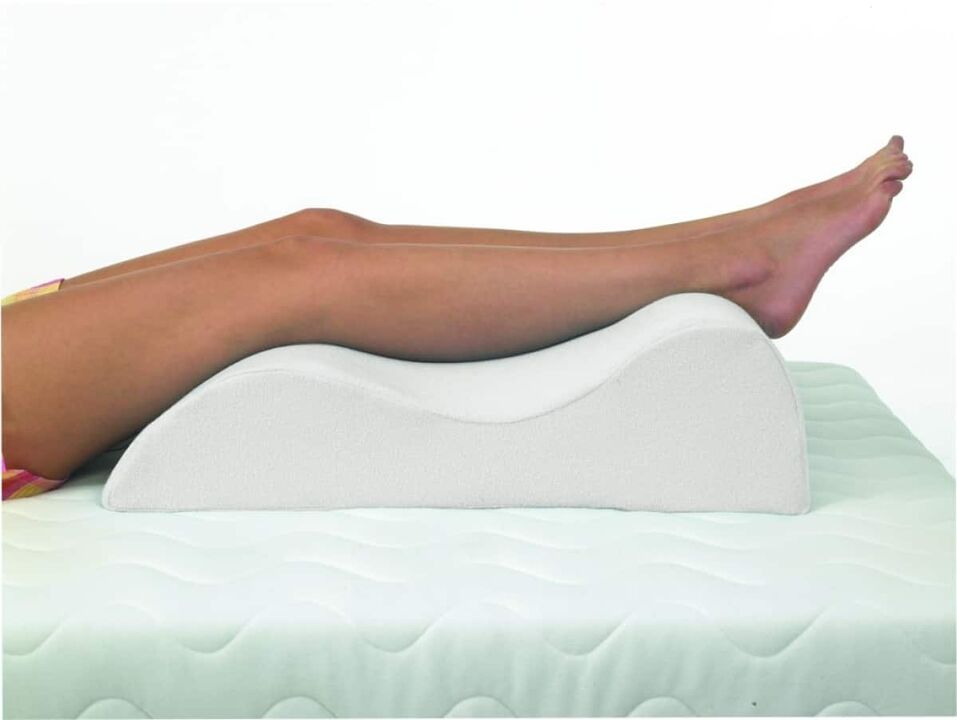
Varicose veins force the patient to abandon factors that cause complications. Sometimes this measure is necessary because untreated varicose veins greatly affect quality of life.
Self-treatment is an exercise in futility, however, you should pay attention to your lifestyle so that varicose veins do not progress too quickly.
Things to do when you have varicose veins:
- Women need to give up high heels;
- Give up bad habits, especially smoking;
- Move around, if you have to sit or stand for a long time, try to change your position;
- Avoid tight/tight clothing and shoes;
- Avoid exposure to high temperatures (sunbathing, hot wax, baths, saunas);
- Control your weight;
- Do not lift heavy objects;
- Take a contrast shower;
- Walk, run, swim more often;
- Keep your feet elevated whenever possible (sleep, rest).
Compression therapy
Regardless of the cause, patients with varicose veins should wear medical hosiery or elastic bandages.
- The most convenient use of hosiery, socks or knee socks, made of special material, usually does not cause inconvenience. The degree of compression of medical hosiery should be recommended by your doctor. The only downside to compression clothing is its price.
Note!Brands of medical hosiery manufacturers may vary, so you need to choose carefully. Make sure the elastic on your knee socks or stockings is not too tight.
- As an alternative, patients often prefer to use short, medium or long elastic bandages. The choice of tension also depends on the stage of the disease and should be recommended by your doctor. The first few uses can be a bit difficult because you will have to control the tension of the tape yourself.
Compression therapy used daily, wearing underwear or bandages helps reduce the burden on the legs throughout the day.
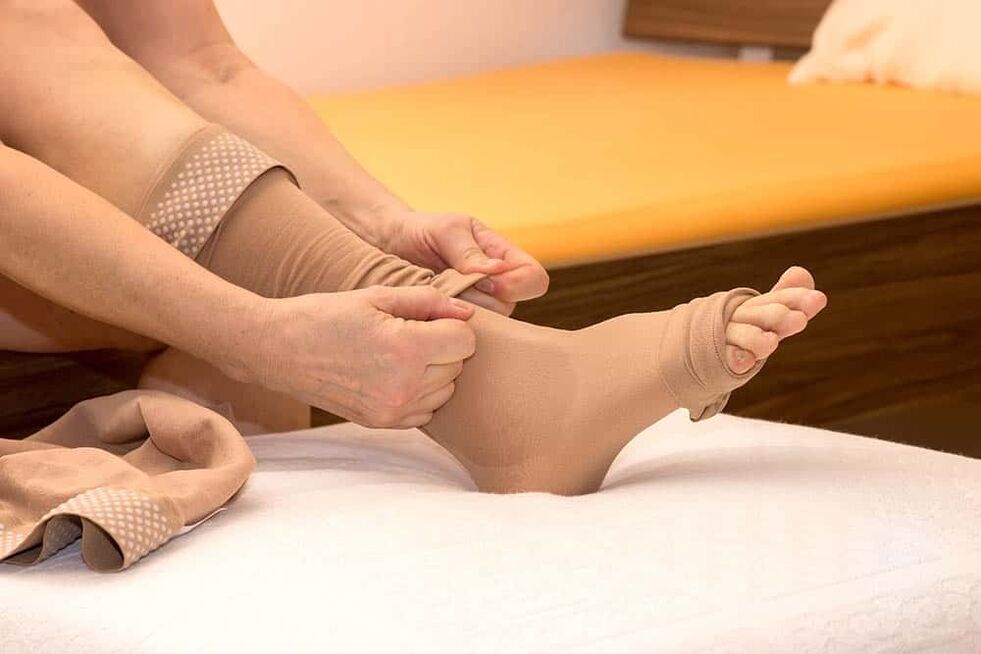
Physical education and sports are therapeutic methods
Varicose veins require movement, so therapeutic and preventative physical education is an important component. Of course, it is better not to do the exercises blindly, but to choose a set of exercises with an expert. Some medical facilities offer group exercise therapy classes.
Typically, calisthenics do not require special training and are available regardless of age; For clarity, a set of gymnastics exercises:
- Tighten and relax your thigh muscles (10 times);
- Inhale, lift the abdominal wall, exhale, contract the abdomen (4 times);
- Bend and straighten the leg at the ankle (10 times);
- Inhale, raise your arms to the sides, exhale, lower your arms (4 times);
- Curl and straighten your toes (15 times);
- Raise your arms as you inhale and lower them as you exhale.
Even from this small set of exercises it is clear that anyone can do it, regardless of age. It's important to take your time and do things at a slow pace, not holding your breath or speeding up your breathing.
Athletes can also perform this set of exercises before their main workout. This is especially important if the patient participates in any sports that are not recommended for varicose veins.
Sports, as an alternative to exercise therapy for varicose veins of the lower extremities, are also suitable, but you need to consult your doctor and personal trainer. Some exercises will have to be eliminated from the workout.
Athletes are sometimes forced to leave their professional careers, especially in jumping, weightlifting and heavyweight boxing. People who like to swim, run and walk can continue to do this exercise one after another.
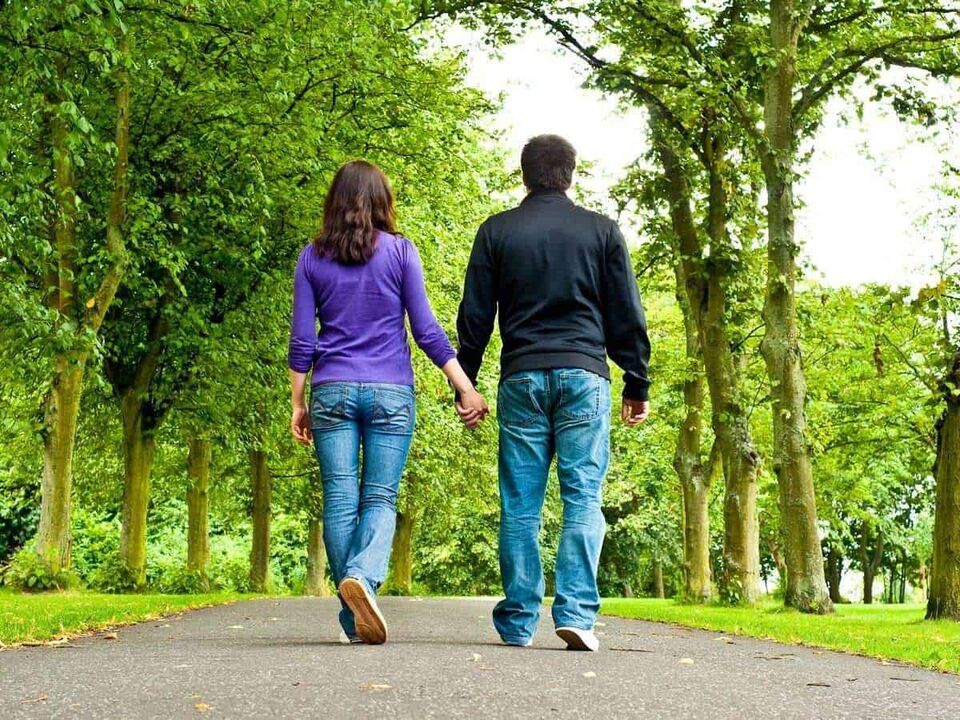
Medicines, after being prescribed by a doctor
The goals of pharmacology in the treatment of varicose veins are different, namely:
- improves venous tone;
- regulate microcirculation;
- improves lymphatic drainage;
- prevention of thrombotic complications;
- Prevent the development of complications.
That is why all medications must be prescribed by a doctor. In this direction, there is a guarantee for the successful resolution of this disease.
Drug treatment is used at different stages: when preparing the patient for the upcoming surgery, in the postoperative period, as well as in cases where there are clear contraindications to surgery. The drugs can have a systemic or local effect and be used in parallel or separately.
Treatment of venous sclerosis
Venous sclerosis also refers to pharmacological treatment methods, however, its use is often unjustified because the positive effects do not apply to all patients. For the most part, this method is used for correction in an aesthetic sense.
It should be borne in mind that the use of this method has a high risk of recurrence and complications, so this procedure is performed by surgeons who have undergone special training.
Physical therapy in the treatment of varicose veins
Physical therapy methods are not the mainstay of treatment for varicose veins but are used successfully to relieve symptoms of the disease. D'arsonval, electrophoresis, barotherapy, magnetic therapy for varicose veins of the lower extremities are used only under the supervision of a doctor, since any physiotherapy has a number of indications. indications and contraindications.
All physical therapy treatments are not applied continuously but in sessions of 10-20 days. In most cases, physical therapy helps delay disease progression, but is not the primary treatment and certainly cannot be used as monotherapy.
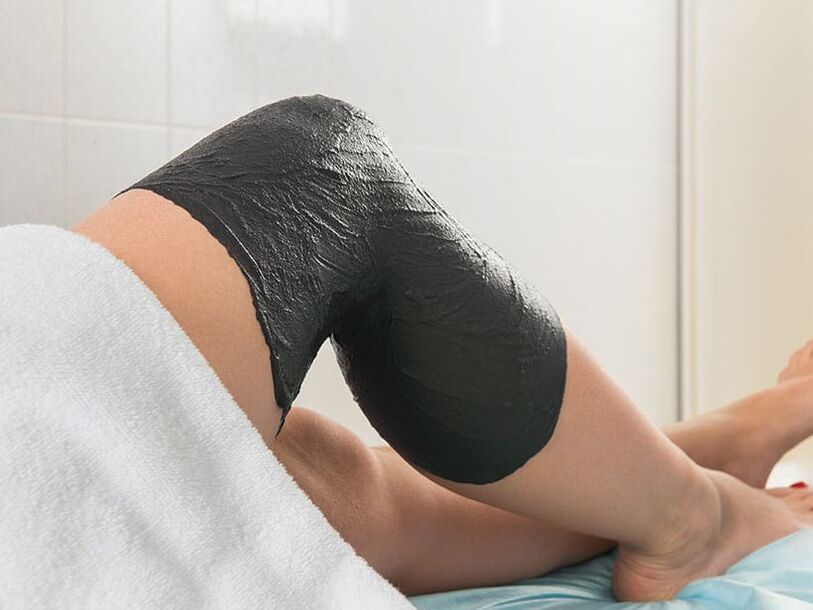
Surgical treatment
Although there are many treatment methods, surgery is still the most basic and important method. Vascular surgeons perform successful surgeries on many patients.
Traumatic phlebectomy has become a thing of the past as modern minimally invasive methods become popular. The Brunner method, the Müller operation, and mini phlebotomy with the Varadi hook all facilitate the management of patients with varicose veins and usually last within a day.
Of course, there are also contraindications to surgical intervention; The main group is patients over 75 years old who show tissue nutritional disorders, microcirculation and/or lymphatic drainage disorders or excessive venous vascular damage. There are special instructions for performing operations on such patients. Sometimes you have to abandon surgery altogether, and sometimes doctors still operate using a combined phlebectomy.
Treatment medicine
The treatment regimen for varicose veins is decided by the doctor. For this, conservative methods and surgical methods are used, it all depends on the stage of development of the disease, as well as the presence of complications.
The simultaneous use of drugs and ointments allows you to reduce the symptoms of pathology and achieve good results in treatment. Currently, on the shelves of pharmacies there are many drugs that are effective in fighting pathology at the initial stages of development.
Medicines for treating varicose veins in the legs are effective.
Important!Only a doctor can prescribe medication, dosage and course of use.
Sclerotherapy
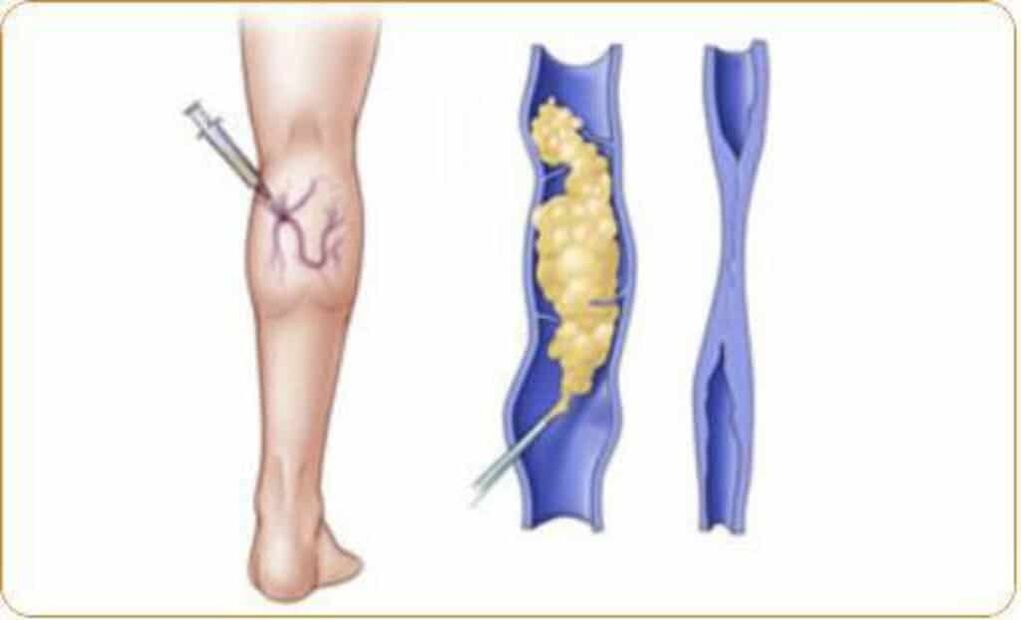
Sclerotherapy is one of the best varicose vein treatments available today. Specially administered drugs allow you to destroy the stagnation of internal veins. After a while, it will begin to stick together and dissolve, allowing blood to circulate to healthy veins.
Treatment is carried out as a course, consisting of up to six sessions for each painful leg. You can notice positive results no earlier than two weeks. However, patients should be prepared to experience pain and tingling sensations.
Soon the unpleasant symptoms will disappear, the diseased veins will disappear. The dosage of the drug is selected taking into account the individual characteristics of the patient.
Complications and side effects are extremely rare. A properly performed procedure has a high chance of recovery.
Ultrasound therapy is similar to sclerotherapy, the difference is in the use of an ultrasound scanner. This method is preferred because the movement of the syringe can be tracked and the drug will be distributed evenly.
Foam sclerotherapy is another type of sclerotherapy. The drug is administered in the form of microbubbles, so this procedure allows you to achieve better results. The problem is that the drug sticks much closer to the vein walls and doesn't mix with the blood.
Surgical treatment methods
Surgical treatment of varicose veins is only used if conservative methods do not achieve the desired results. Patients are given local anesthesia and after a few hours they can go home.
There is practically no hematoma and no toxic features of general anesthesia. The results obtained last for several years.
Phlebectomy is a type of surgery performed under local surgery. Two small punctures are made to remove the affected vein. Sometimes this method can replace sclerotherapy. After just a few weeks, patients will be able to return to their normal lifestyle.
Laser treatment is the gentlest treatment and can only be performed by a qualified specialist. Using an ultrasound scanner, a light source is inserted into the vein.
The procedure is controlled by special devices. The laser beam boils the plasma, the diseased vein closes and does not participate in the blood circulation process. The price of such intervention is high, so it is not for everyone.
Darsonvalization
With the help of the D'arsonval apparatus, it is possible to normalize blood circulation, as well as eliminate congestion in diseased veins. The tone gradually increases and decreases, the venous tone increases. Patients experience pain and itching relief.
Adequate circulation of lymph, as well as adequate blood circulation, allows tissues to receive full nutrition and the amount of oxygen in them increases. Veins are narrowed or dilated; Gymnastics can increase their elasticity.
The device moves from bottom to top. Lymph and blood flow from the ankle to the thigh and the congestion stops. To achieve the desired result, you need to undergo a full course of treatment, which includes at least twenty procedures.
Home remedies
Advice!Varicose veins can also be effectively treated with home remedies.
The most common method is using medicinal herbs. You can buy them at the pharmacy or collect them yourself in the summer.
white glue
An alcoholic tincture is prepared based on the flowers of the plant. Soak a cotton swab in it and wipe the affected area several times a day.
Sage
Collect fresh herbs and grind them in a mortar. Separate a spoonful of herbs and mix with the same amount of sour cream. Apply the resulting mixture to the sore spot and apply a bandage on top. After two hours, remove the compress. Repeat the manipulations for five days, take a short break, then repeat the treatment again.
Kalanchoe
Wash Kalanchoe leaves, place on paper towels and let dry. Chop the leaves and put them in a glass jar. Pour wine on top and let it ferment for seven days, stirring occasionally. Filter the tincture and lubricate sore veins for several months in a row.
Apple vinegar
Dissolve two tablespoons of vinegar in a cup of water and drink twice a day. Undiluted apple cider vinegar should be rubbed into the painful area twice a day. After a month, the veins will begin to shrink.
Cream
Crush one part garlic, add two parts butter. In its pure form, apply the resulting cream to the sore spot, cover it with parchment paper and bandage it. Leave the compress on all night, wash it off in the morning and wrap your leg with an elastic bandage. Repeat the procedure throughout the month.
Garlic
To strengthen the results of treatment, you can take garlic orally. Mix 250 grams of minced garlic and 350 grams of honey, brew for 5 days. Take one spoon three times a day.
Tomato
Cut fresh tomatoes into slices, apply them to the problem area and wrap with a bandage. Keep the compress on for four hours, then remove and wash your feet. The duration of the treatment course is two weeks, then take a ten-day break and repeat.
Prevent
It is much easier to prevent disease than to fight it later, which is why prevention is necessary. If you have a genetic predisposition to the development of varicose veins, you need to pay special attention to your health.
First of all, you need to give up bad habits and follow the recommendations mentioned above. Your diet should include foods rich in vitamins.
Vitamin E
Vitamins are found in many foods: lettuce, vegetable oils, legumes. It is necessary to strengthen the walls of the veins, as well as increase their elasticity. Vitamin C has similar properties.
Copper
Elastin synthesis is supported by copper-rich foods. Seafood is included here. To maintain body weight, you need to give up sugary foods.
To prevent varicose veins, you must follow these rules:
- Don't let your legs strain during the day. People who work standing need to spend a few minutes every hour sitting. Ideally: take a horizontal position, raise your legs above your head and hold for twenty minutes.
- If you work in a sitting position, you need to stand up for a few minutes every hour and spend this time standing. Therefore, the speed of blood movement through the veins will be increased. Periodically rotate your feet in different directions.
- Do not lift heavy objects.
- Massage your feet daily with cool water.
- Do not abuse visits to the sauna and bath.
Effective varicose vein treatment can achieve good results. Patients quickly return to normal life.
How complicated is the disease?
Complications of varicose veins are always unpredictable, although they develop gradually. Without medical supervision and therapeutic treatment, the risk of developing complications is many times greater.
- Nutritional ulcers with ascending and descending varicose veins.They are usually located on the lower part of the legs on the inside, however, they can also be observed on the outside, although this manifestation is quite rare. The deeper the trophic ulcer, the higher the risk of bleeding.
- Thrombophlebitis.It can happen with any type of varicose veins, the occurrence of such a complication directly depends on the clotting properties of the blood. This complication can be prevented using laboratory monitoring.
- Eczema.Occurs due to violation of tissue nutrition. Eczema and trophic ulcers can occur together and separately.
- Bleeding due to varicose veins in the lower limbs.This type of complication can appear against the background of deep trophic ulcers, as described above, such bleeding will be external. Internal (subcutaneous) bleeding is observed when varicose veins persist.
Important things to know about varicose veins

Varicose veins become a test for patients, because the more they ignore them, the worse the disease will progress. The course of varicose veins depends not only on the doctor's instructions, but also on how carefully the patient follows them. Varicose veins are a chronic disease, so even after surgery, treatment often does not end.
What the doctor advises must be done and followed, be it a magnet for varicose veins of the lower extremities, medication or exercise therapy. It is a complex treatment that brings positive results and you should not ignore even the most insignificant point.

























